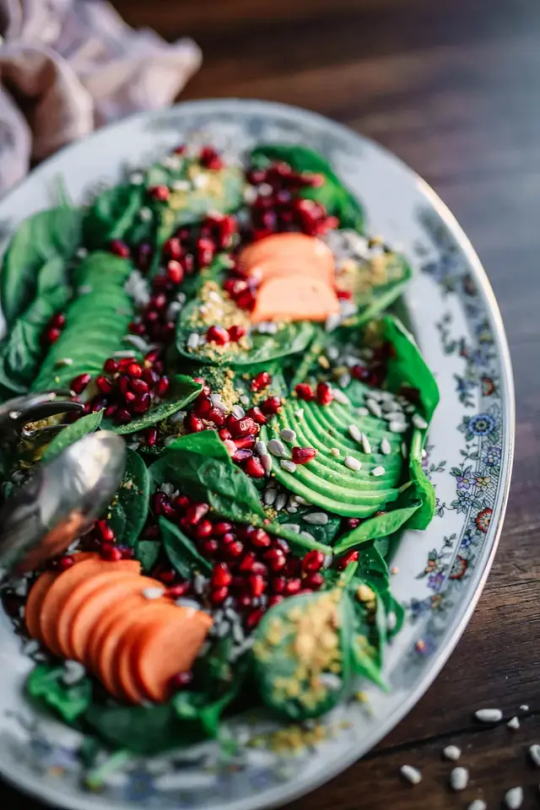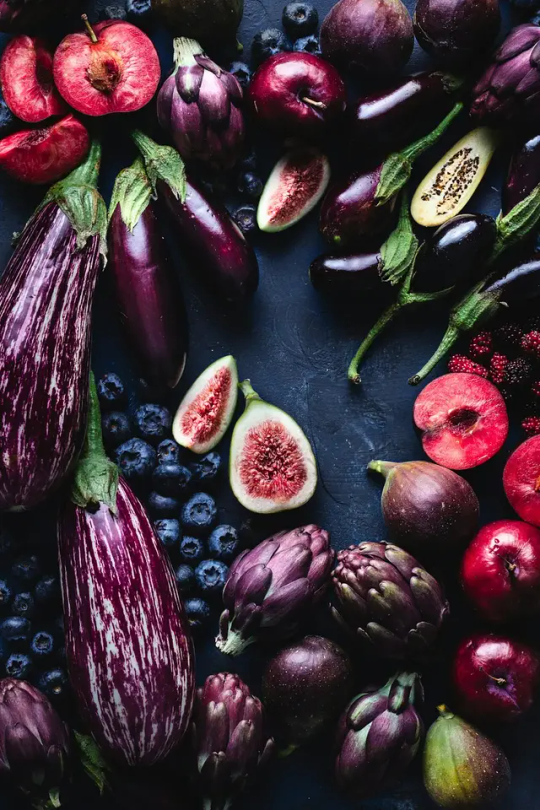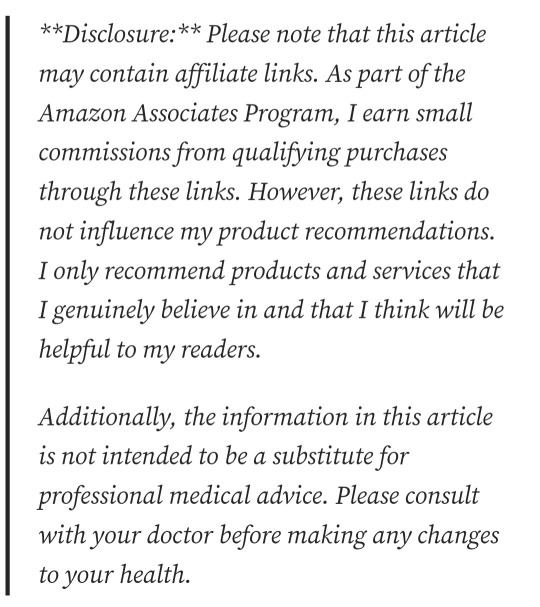#weight loss meal plan for women
Explore tagged Tumblr posts
Text
#weight loss diet plan for women#weight loss diet plan#weight loss meal plan for women#diet plan for weight loss for female#diet plan for weight loss
0 notes
Text
How to Lose Weight Fast: Quick and Healthy Strategies
Looking for ways on how to lose weight fast? Explore simple tips that make healthy weight loss achievable. Learn how balanced meals, regular exercise, and small lifestyle changes can help you shed pounds quickly. Find natural methods that boost your metabolism and support sustainable weight loss. Start your journey to a healthier, fitter you today!
#non surgery weight loss#how to lose weight fast#how to lose belly fat#weight loss diet for women#7 day protein diet plan for weight loss#7 day eating plan to lose weight#7 day diet menu for weight loss#weight loss challenge#weight lose meal plan
0 notes
Text
Diet Plan for Weight Loss for Women
Maintaining a healthy weight is essential for overall well-being, and for women, a tailored diet plan can make all the difference. This guide provides a detailed diet plan specifically for women in 2024, focusing on everything from essential nutrients to common pitfalls to avoid. Our goal is to help you achieve sustainable weight loss and long-term health.

1 note
·
View note
Text
youtube
#Keto Diet Menu for Beginners#Low Carb Diet Weight Loss#Weight Loss Diet Plan for Women#Keto Diet Meal Plan#Keto Diet Bangalore#keto diet plan#low carb foods#keto diet for beginners#low carb diet#keto diet plan for weight loss#low carb diet plan#mama keto#Youtube
0 notes
Text
Online Diet Plan

Dt. Shreya Katyal at Diets & More in Delhi offers personalized Online Diet Plan for health improvement. Specializing in weight management, diabetes, and more, she provides expert online diet consultations. Contact for tailored solutions, including bodybuilding, therapeutic diets, and celebrity diets. Get a comprehensive online diet plan today.
#personalized diet plan free online#Online diet plan for weight loss#Online diet plan free#Online diet plan for women#personalized diet and workout plan free#free diet plans pdf#online diet plan for weight gain#meal plan for weight loss
0 notes
Text
Unlocking the Power of Low-Carb Vegetables: A Guide to Enhanced Health and Well-being

In the bustling world of health and nutrition, low-carb vegetables stand out as unsung heroes, quietly offering an array of benefits that can transform your well-being. These nutritional powerhouses, often overlooked in favor of their more glamorous counterparts, hold the key to unlocking a healthier, more vibrant you.
The Science Behind the Benefits
Low-carb vegetables aren't just about counting carbs; they're about embracing a nutrient-dense approach to eating. These culinary gems are packed with fiber, vitamins, minerals, and antioxidants, each playing a crucial role in optimizing your health.
1. Blood Sugar Balance:
Fiber, the abundant star of low-carb vegetables, acts as a natural regulator of blood sugar levels. It slows down the absorption of sugar into the bloodstream, preventing those dreaded spikes and crashes that can wreak havoc on your energy levels and overall health. This makes low-carb vegetables a valuable ally for individuals with diabetes or those seeking to prevent it.
2. Digestive Health Enhancement:
Fiber's benefits extend far beyond blood sugar control. It acts as a gentle yet effective digestive aid, adding bulk to stool and promoting regular bowel movements. Additionally, fiber nourishes the beneficial bacteria in your gut, creating a thriving microbiome that supports overall digestive health.
3. Cardiovascular Disease Risk Reduction:
Low-carb vegetables often come with the added bonus of being low in saturated and trans fats, the notorious culprits behind elevated cholesterol levels and increased cardiovascular risk. By swapping out high-fat foods for these nutrient-rich alternatives, you can significantly lower your risk of heart disease, stroke, and other cardiovascular complications.
4. Weight Management Support:
In the quest for a healthy weight, low-carb vegetables emerge as powerful allies. Their low-calorie, high-fiber content makes them incredibly satiating, keeping you feeling fuller for longer and reducing overall calorie intake. This can be a game-changer for those seeking to achieve and maintain a healthy weight.

A Culinary Adventure with Low-Carb Vegetables
The beauty of low-carb vegetables lies in their versatility and flavor. They seamlessly blend into a variety of dishes, adding texture, color, and a symphony of nutrients to your meals. Here are some culinary gems to explore:
1. Cruciferous Companions:
Cauliflower, broccoli, Brussels sprouts, kale, and cabbage are cruciferous vegetables that are not only low in carbs but also brimming with vitamins, minerals, and antioxidants. Studies have even linked them to anti-inflammatory and anticancer properties, making them a wise addition to your diet.
2. Leafy Green Powerhouses:
Spinach, collard greens, Swiss chard, and arugula are leafy green vegetables that pack a nutritional punch while remaining low in carbs. They are excellent sources of vitamins A, C, and K, as well as folate and iron, making them essential for overall well-being.
3. Asparagus, a Versatile Delight:
Asparagus is a culinary chameleon, adaptable to various dishes and flavors. It's low in carbs, high in fiber, and a good source of vitamin K, folate, and manganese. Studies suggest that asparagus may help protect against cognitive decline and promote bone health.
4. Bell Peppers, a Colorful Symphony:
Bell peppers, available in an array of vibrant colors, are not only visually appealing but also nutritionally dense. They are low in carbs and a good source of vitamin C and potassium. Studies have shown that bell peppers possess antioxidant and anti-inflammatory properties, contributing to their potential role in reducing chronic disease risk.

5. Eggplant, a Culinary Enigma:
Eggplant, with its unique texture and flavor, is a low-carb vegetable with a rich source of fiber, potassium, and manganese. Studies suggest that eggplant consumption may help lower blood pressure and cholesterol levels.
6. Avocados, a Nutrient-Rich Delight:
While technically a fruit, avocados are often embraced in low-carb diets due to their high-fat content and low carbohydrate count. They are a rich source of healthy fats, fiber, and potassium. Studies have linked avocado consumption to improved heart health, reduced inflammation, and enhanced weight management.
Embrace the power of low-carb vegetables and embark on a culinary adventure that nourishes your body, invigorates your mind, and empowers you to live a healthier, more vibrant life.

#health#healthy#food#foods#foodie#nutritious#nutrition#healthy diet#low cal diet#dash diet#weight loss diet#diet plan#tw ed diet#dieta ana#diy#low cal restriction#low cal meal#love#women health#self healing#healingjourney#eating#eat#daily diet#daily diets#daily dietary plan#digestion#digestivehealth#digestive disorders#digestivewellness
0 notes
Text
Turbocharge Your Fat Loss With 116 Oil-Free Delicious Keto Air Fryer Recipes That Cook in Less Than 30 mins.
I do my very best to find good items for any one of you searching the web. And updating all the time. Ian Jackson
“I lost 65 pounds eating so-called forbidden foods” When we’re on a keto diet, we’re tempted by fried foods like these ALL THE TIME… However, what if you could eat all the golden, crispy onion rings you want? 116 Oil-Free Delicious Keto Air Fryer Recipes That Cook in Less Than 30 mins… “I lost 65 pounds eating so-called forbidden foods” When we’re on a keto diet, we’re tempted by fried foods…

View On WordPress
#100% Money-Back Guarantee#100+ mouth-watering Keto air fryer recipes#14-Day Air Fryer Meal Plan#Air Fryers sit on the countertops#Can replace Microwave#Cooking Is A Two-Step Process#Digital Copy Of The Keto Air Fryer#easy dinner recipes#fast#hat if I don’t like the recipes?#How do I get my cookbook?#How EASY it was to CLEAN#Is it easy to read?#Is there a physical copy of this cookbook?#Keto Air Fryer Cookbook#Meals Taste Amazing#men & women are reaching their goal weights#More time to relax and de-stress#o your recipes include nutritional information?#Start your weight loss#Who created the recipes?#Women) Melt More Fat#You Get Our Zero-Hassle
0 notes
Text



CLICK THE LINK BELOW :
#the ultimate keto meal plan#books#library#business#digitalmarketing#affiliatemarketing#ketodiet#keto#food#weight loss diet#pure heroine#women#australia#usa#russia#uk#india
1 note
·
View note
Text
Ayurveda Insight:Harmonizing Intermittent Fasting with Ancient Wisdom
Intermittent fasting (IF) is an eating pattern that cycles between periods of fasting and eating. It has gained popularity for its potential health benefits, including weight loss, improved metabolic health, and enhanced brain function Ayurveda, the traditional system of medicine that originated in India, emphasizes a holistic approach to health and well-being. While Ayurveda does not directly…

View On WordPress
#16 8 fasting#16/8 intermittent fasting#best intermittent fasting for weight loss#fasting diet#fasting for weight loss#intermittent fasting#intermittent fasting 16 8#Intermittent fasting and autophagy#Intermittent fasting and metabolism#Intermittent fasting benefits#Intermittent fasting for beginners#intermittent fasting for weight loss#intermittent fasting for women#Intermittent fasting guide#Intermittent fasting health effects#Intermittent fasting hormone balance#Intermittent fasting meal plan#Intermittent fasting research#intermittent fasting schedule#Intermittent fasting time-restricted eating#Intermittent fasting tips#Intermittent fasting types#Intermittent fasting weight loss
0 notes
Text
#weight loss diet plan for women#weight loss diet plan#weight loss meal plan for women#diet plan for weight loss for female
0 notes
Photo

(via Eating Smart, Spending Less: Discover the Best Weight Loss Shakes for Women on a Budget - healthwealthzone.com)
0 notes
Text
Best diet plan for weight loss

A healthy and sustainable diet plan for weight loss should focus on balanced nutrition and creating a calorie deficit. Here's a general outline of a well-rounded diet plan:
Portion control: Be mindful of portion sizes to avoid overeating. Use measuring cups, a food scale, or visual cues to understand appropriate portion sizes for different food groups.
Balanced meals: Include a variety of foods from different food groups in each meal. Aim to fill your plate with:
Vegetables: Fill half of your plate with non-starchy vegetables like leafy greens, broccoli, peppers, and cauliflower.
Lean proteins: Incorporate lean sources of protein such as chicken breast, turkey, fish, tofu, legumes, and Greek yogurt.
Whole grains: Choose unrefined grains like quinoa, brown rice, whole wheat bread, and oats for a source of fiber and sustained energy.
Healthy fats: Include sources of healthy fats like avocados, nuts, seeds, olive oil, and fatty fish such as salmon.
Reduce processed and sugary foods: Minimize consumption of processed foods, sugary snacks, sodas, and high-fat desserts. These foods tend to be calorie-dense and nutrient-poor.
Mindful eating: Pay attention to your body's hunger and fullness cues. Eat slowly, savor your food, and avoid distractions while eating, such as watching TV or using electronic devices.
Hydration: Drink an adequate amount of water throughout the day. Water can help control hunger, support digestion, and keep you hydrated. Limit or avoid sugary drinks and alcohol, as they can contribute to excess calorie intake.
Regular meal schedule: Establish regular meal times and try to stick to them. Avoid skipping meals, as it may lead to overeating later in the day.
Snack smartly: Choose healthy snacks that are low in calories but provide satiety. Opt for fresh fruits, vegetables with hummus, Greek yogurt, or a handful of nuts.
Physical activity: Combine your diet plan with regular exercise. Aim for at least 150 minutes of moderate-intensity aerobic activity per week, along with strength training exercises. Consult with a healthcare professional before starting any exercise regimen.
Monitor progress: Keep track of your food intake, physical activity, and weight loss progress. This can help you stay accountable and make adjustments if needed.
Seek professional guidance: If possible, consult with a registered dietitian who can provide personalized recommendations based on your specific needs, preferences, and any underlying health conditions.
Remember, sustainable weight loss is a gradual process. It's essential to adopt healthy habits and make long-term lifestyle changes rather than relying on restrictive diets or quick fixes.
Click the link below and claim your discounted copy now:

#diet plan for weight loss#weight loss diet plan#weight loss diet#diet plan to lose weight fast#weight loss#weight loss diet plan for men#full day diet plan for weight loss#meal plan for weight loss#diet plan#best diet for weight loss#indian diet plan for weight loss#gunjanshouts diet plan for weight loss#diet plan for fat loss#weight loss diet plan in hindi#best diet plan for weight loss#fat loss diet#weight loss diet plan for women
1 note
·
View note
Text

Super Bhujiya
#Keto Diet Plan#Low Carb Foods#Low Carb Diet#Keto Diet for Beginners#Keto Diet Plan for Weight Loss#Low Carb Diet Plan#Keto Diet Plan for Beginners#Low Carb Vegetarian Diet#Keto Diet Menu for Beginners#Low Carb Diet Weight Loss#Weight Loss Diet Plan for Women#Keto Diet Meal Plan#Keto Diet Bangalore#Weight Loss Plan for Women#Weight Loss Diet for Women#Healthy Weight Loss Diet for Men#mama keto
0 notes
Text
Learn How Natasha Burn Fat FAST! Go here
#weight loss meal plan#weight loss facts#weight watchers Diet#weight loss#Smoothie#weight loss workout#weight loss Drinks#weight loss journey#weight loss transformation.#Women's weight loss
0 notes
Text
Develop a Successful Meal Plan for Weight Loss | Women's Fitness
Take charge of your weight loss journey - learn how to create a successful meal plan that fits into your lifestyle!
Meal planning is an important part of any weight loss journey. It can be daunting to come up with a plan that works for you and fits into your lifestyle, but it doesn’t have to be complicated. With a few simple tips, you can start developing a successful meal plan for weight loss. First, it’s important to consider your macronutrients. Macronutrients are the three essential nutrients that our…

View On WordPress
0 notes
Text
6 Simple Guides to Follow a Portion Control Diet Plan for Women

Want to follow a portion control diet easily? Check out this 6-step guide to learn how! Learn how to make your meals better by getting advice from a pro.
#portion control for weight loss, #portion control, #portion sizes for weight loss, #prettyhealthfood
1. Understand Your Portion Size:
Fill each part of your plate with a different food group using your plate as a guide. Fruits and vegetables, whole grains, carbohydrates, lean protein.
2. Start with meal planning:
When you plan your meals, you have control over what gets into your meals and snacks.
3. Opt for High Volume Snacks:
Fruits and vegetables instead of calorie-dense snacks such as chips or crackers
4. Be aware of hidden calories:
Many people don’t realize how many hidden calories are in their favorite foods such as margarine and salad dressings.
5. Eat Slowly & Enjoy Meals:
Eating slowly allows your brain time to register when you are full which can prevent overeating and allow you to enjoy your meal without feeling guilty afterwards.
6. Monitor serving utensils/dishes:
A very effective way to practice portion control is by using smaller plates (about 9-10 inches in diameter).
portion control for weight loss, portion control, portion sizes for weight loss, prettyhealthfood, 6 portion control tips for weight loss, portion control diet, portion control plate, diet plan for women to lose weight, simple portion control, diet plan to lose weight for women, portion control for fat loss, meal plan for women to lose weight, how to portion control, how to practice portion control, nutritionist tips for portion control, diet plan to lose weight for men
#portion control for weight loss#portion control#portion sizes for weight loss#prettyhealthfood#6 portion control tips for weight loss#portion control diet#portion control plate#diet plan for women to lose weight#simple portion control#diet plan to lose weight for women#portion control for fat loss#meal plan for women to lose weight#how to portion control#how to practice portion control#nutritionist tips for portion control#diet plan to lose weight for men
0 notes